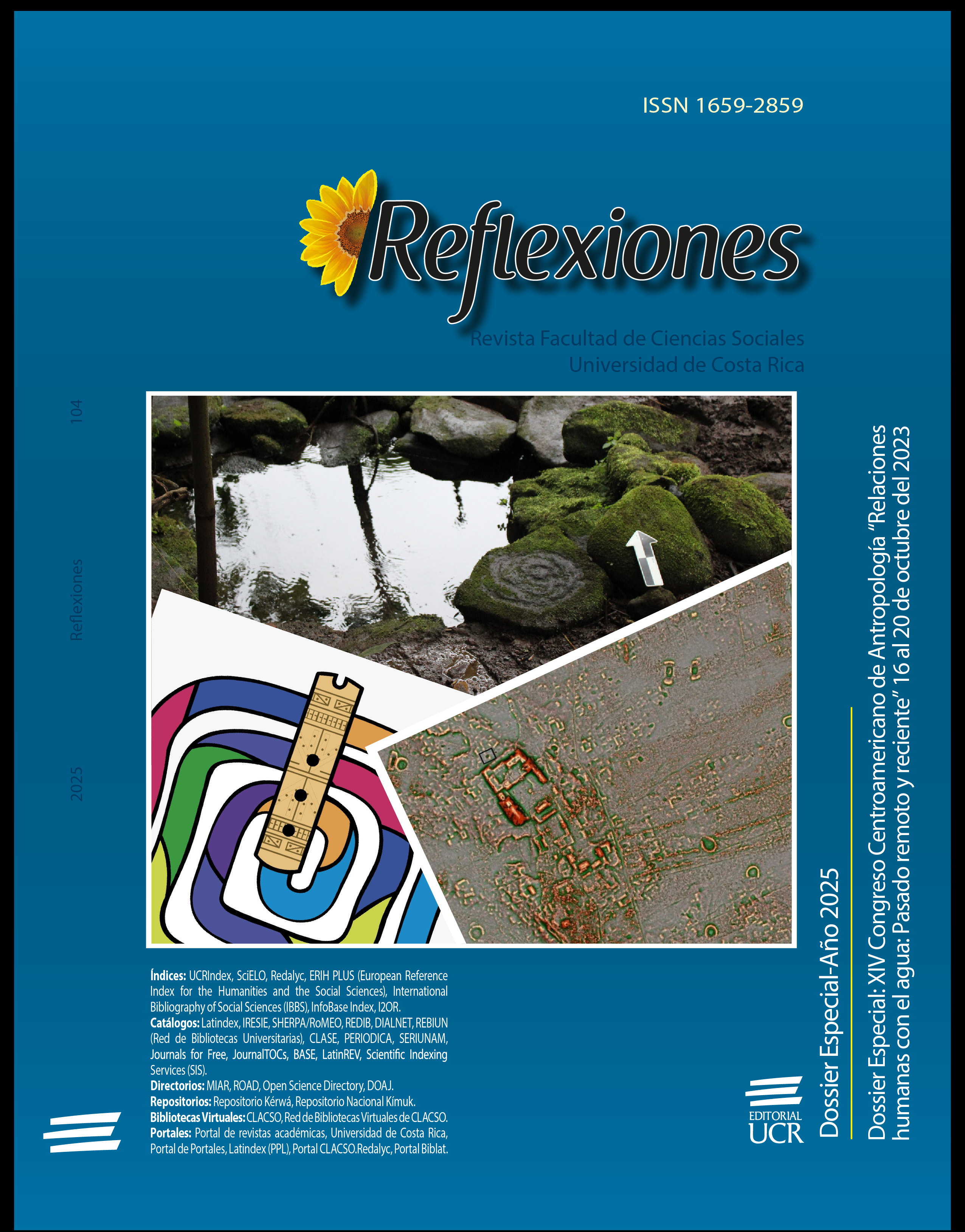Abstract
Introduction: Tláloc, the Nahuatl deity of rain and fertility, arrived in Central America with Nahua migrations, influencing Postclassic centers like Cihuatán. Archaeological findings reveal the centrality of Nahua deities, including Tláloc, in their worldview. Atypical representations of Tláloc, lacking in-depth archaeological studies, have been reported in Cihuatán.
Objective: To initiate the investigation and interpretive analysis of five iconographic pieces of Tláloc in Cihuatán, exploring similarities with the observation of the jaguar and puma, felines relevant to the Nahua-Pipil culture of the Postclassic period.
Method: Iconographic analysis of five Tláloc pieces from Cihuatán, comparing their iconography with the Nahua tradition. Observation of the jaguar and puma's features, seeking visual and conceptual parallels that may have influenced the local representation of the deity in the Postclassic.
Results: The initial analysis reveals variations in the traditional iconography of Tláloc in the Cihuatán pieces. Possible similarities are identified between certain features of these representations and characteristics of the jaguar and puma, animals significant to the Nahua-Pipil cosmovision.
Conclusion: This initial approach suggests a potential influence of local fauna, the jaguar and puma, on the representation of Tláloc in Cihuatán during the Postclassic period. A new line of archaeological and interpretive research is opened to better understand the adaptation of Nahua deities in Central America and their connection to the natural environment.
References
Amaroli, Paul. 2025. «Diagnóstico del centro ceremonial Poniente, sitio arqueológico Cihuatán, 2000». Fundar. Consulta: 5-febrero-2025. https://fundar.org.sv/layout-esp1.html
Chávez, Hugo I. 2016. «Jaguares y perros: Manifestaciones rupestres procedente del sitio arqueológico Igualtepeque, Lago de Guija, municipio de Metapán, departamento de Santa Ana, El Salvador». En Alrededor de la lluvia: Imágenes pasadas y presentes en América, Editores varios, Editorial Secretaría de Cultura de la Presidencia, Universidad Nacional Autónoma de México, Instituto de Astronomía de la UNAM, Museo Nacional de Antropología Dr. David J. Guzman.
Fowler, William. 2011. «El complejo Guazapa en El Salvador: la diáspora tolteca y las migraciones nahua pipiles». La Universidad, Nueva época. Vol. 4, No. 9: 17-66. https://revistas.ues.edu.sv/index.php/launiversidad/issue/view/31
Gallut, María Elena. 2014. «Tlaloc en las márgenes de Mesoamérica: Los ejemplos de Cihuatán y las Marías en El Salvador». Revista digital universitaria. Vol. 15, No. 1. http://www.revista.unam.mx/vol.15/num1/art05/index.html
González, Yolotl. 1995. Diccionario de Mitología y Religión mesoamericana. Ediciones Larousse.
Paredes, Federico. Daniel Salazar. 2016. «Teo síntesis Mesoamericana en una tradición escultórica del occidente de El Salvador». En Alrededor de la lluvia: Imágenes pasadas y presentes en América, Editores varios, Editorial Secretaría de Cultura de la Presidencia, Universidad Nacional Autónoma de México, Instituto de Astronomía de la UNAM, Museo Nacional de Antropología Dr. David J. Guzman.
Perrot-Minnot, Sebastien. Federico Paredes. 2006. «El disco de Cara Sucia. Análisis de un monumento clásico tardío de la Costa Occidental de El Salvador». El Salvador Investiga, Edición 4: 19 -26.
Ségota, Dúrdica. 1995. «El Panteón Mexica». Arqueología Mexicana, septiembre-octubre, Volumen III, Número 15: 32-41.
##plugins.facebook.comentarios##

This work is licensed under a Creative Commons Attribution-NonCommercial-NoDerivatives 4.0 International License.
Copyright (c) 2025 Hugo Iván Chávez Servano

